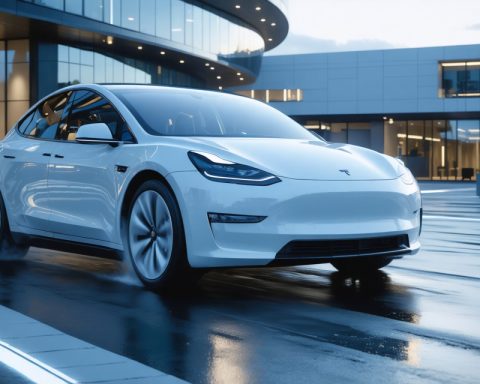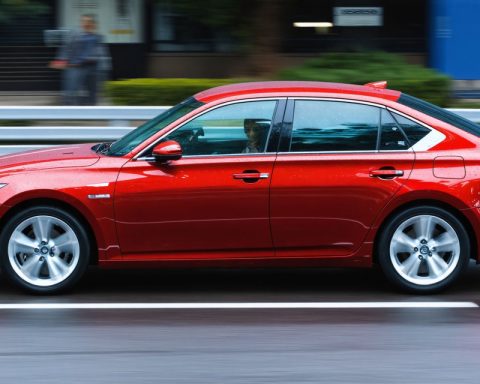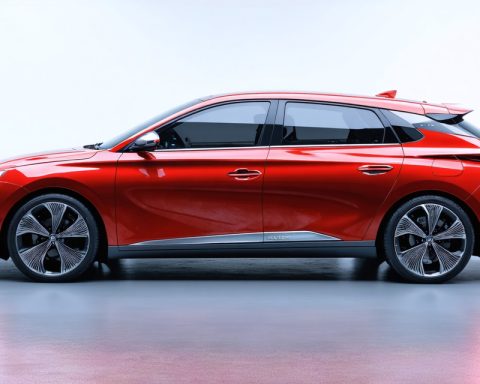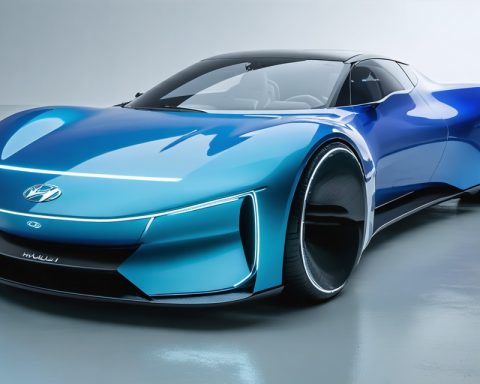- Electric vehicles (EVs) are becoming integral to urban life, reducing noise and pollution in cities worldwide.
- Technological advances in lithium-ion batteries and expanded charging infrastructure are making EVs more practical and appealing.
- Governments are incentivizing EV adoption, with policies supporting clean urban mobility, exemplified by Norway’s success.
- The rise of EVs introduces new challenges, including sustainable battery recycling and job transitions in the automotive industry.
- EVs are paving the way for autonomous and connected vehicles, enhancing safety and efficiency in urban environments.
- The shift toward electric mobility is essential for a sustainable future where technology and nature coexist.
The morning sun casts a golden hue over bustling city streets, where a quiet revolution is taking place. Electric vehicles (EVs), once seen as futuristic novelties, are rapidly becoming a staple of urban life. No longer drowned by the roar of internal combustion engines, city sounds now carry the gentle hum of electrified transportation weaving gracefully through traffic.
The automotive industry, long dominated by fossil fuels, stands on the cusp of transformation, driven by innovation in electric mobility. This shift is more than a trend; it’s a necessary leap toward a sustainable future. Mega-cities across the globe—be it New York, London, or Shanghai—face the pressing challenges of pollution and congestion. EVs offer a promising solution, radically altering how urban centers manage environmental impact and resource consumption.
The Heart of the Revolution
Under the sleek exteriors of today’s EVs lies cutting-edge technology. Advanced lithium-ion batteries power these silent machines, providing ranges previously thought impossible. The instant torque delivered by electric motors offers not just efficiency, but exhilarating performance that attracts seasoned drivers and novices alike. With charging infrastructure expanding rapidly, the dreaded “range anxiety” is becoming a thing of the past, making EVs more practical for everyday use.
Governments worldwide recognize the potential of EVs, rolling out incentives and mandates to accelerate adoption. Norway, for instance, leads the way with aggressive policies that make EV ownership not only feasible but attractive. Tax breaks, exclusive lane access, and exemption from tolls have turned the Scandinavian nation into a blueprint for clean urban mobility.
The Ripple Effect
The rise of EVs reshapes the entire automotive landscape, influencing not just how cars are built, but how they connect with the world. Autonomy and connectivity are the next frontiers. Electric cars that drive themselves, navigate urban jungles autonomously, and communicate with smart city grids are not far-off dreams, but on the horizon. This connectivity promises not just convenience but unprecedented safety and efficiency.
Yet, the transition to electric is not without hurdles. The environmental cost of battery production, dismantling long-standing industry practices, and ensuring job transitions for millions of workers worldwide present significant challenges. However, innovation thrives in overcoming obstacles—EVs are already seeing advancements in sustainable battery recycling and green manufacturing practices.
Beyond the Horizon
As cities grow and evolve, the push for sustainable mobility will only intensify. Electric vehicles, with their promise of cleaner, quieter streets, represent a critical piece of this puzzle. The real triumph of electric vehicles lies not just in zero emissions, but in pioneering a future where technology and nature coexist in harmony.
The automotive landscape is shifting beneath our feet, and this change invites us all to reconsider our relationship with mobility. Embrace the electric wave, for it’s not just the future—it’s the now.
Discover the Electric Vehicle Revolution: Transforming Urban Landscapes and Beyond
The Current Landscape of Electric Vehicles
The rise of electric vehicles (EVs) signifies a pivotal shift in urban transportation and environmental management. Cities worldwide are experiencing a quiet yet profound revolution as the gentle hum of EVs replaces the traditional clatter of internal combustion engines. This change is not merely about adapting to new technology—it’s a movement towards a more sustainable and environmentally friendly future.
EV Technology and Innovation
Central to this revolution are the advanced technologies powering modern EVs:
– Lithium-Ion Batteries: The heart of EV performance, these batteries offer impressive ranges, now often exceeding 300 miles on a single charge. Continuous advancements are expected to further increase range and reduce charging times.
– Instant Torque: Unlike internal combustion engines, electric motors provide immediate torque, resulting in faster acceleration and smoother driving experiences.
– Charging Infrastructure: Significant investments by governments and companies are expanding the network of EV charging stations. Initiatives like Tesla’s Supercharger Network and ChargePoint’s widespread presence are diminishing “range anxiety.”
How-To Transition to Electric Vehicles
1. Evaluate Your Needs: Consider your daily commute, access to charging stations, and budget to choose a suitable EV model.
2. Explore Incentives: Check government and local incentives such as tax rebates, reduced tolls, or federal grants, which can significantly lower the cost of EV purchasing.
3. Install Home Charging: If possible, install a charger at your home to maximize convenience and cost efficiency.
Real-World Use Cases
– Urban Mobility: EVs are transforming crowded city centers, exemplified by the vast deployment of electric buses and rideshare fleets in cities like San Francisco and Oslo.
– Logistics: Companies like FedEx and Amazon are integrating electric delivery trucks into their logistics to reduce carbon footprints.
Market Forecasts and Industry Trends
– Studies suggest that by 2030, over 50% of new car sales will be electric, driven by environmental policies and consumer demand shifts.
– Innovations in battery technology, like solid-state batteries, promise to further boost energy density and safety.
Challenges and Limitations
While the transition to EVs brings many benefits, it is not without challenges:
– Battery Production Environmental Impact: Mining and manufacturing of lithium and rare earth materials have significant environmental footprints, sparking debates and research into alternative, sustainable practices.
– Job Displacement: The shift might result in job losses in traditional automotive manufacturing, requiring strategic workforce transitions and retraining programs.
– Recycling Concerns: Efficient battery recycling methods are still under development to mitigate environmental impacts of spent battery disposal.
Pros and Cons Overview
Pros:
– Reduced emissions contributing to cleaner air in urban areas.
– Advanced technology offering superior performance and low maintenance.
Cons:
– Higher upfront costs, although these are often offset by long-term savings and incentives.
– Limited range and charging infrastructure in rural areas can be problematic, though rapidly improving.
Actionable Recommendations
– If considering an EV purchase, research models’ total cost of ownership rather than just upfront price.
– Advocate for increased public charging infrastructure in underserved areas.
– Encourage local governments to implement and enhance EV-friendly policies.
Conclusion
The electric vehicle revolution is reshaping the way we think about urban living and transportation. As cities continue their march toward sustainability, the integration and adoption of EVs offer both opportunities and challenges. Embracing this change requires informed decision-making and proactive participation from consumers and policymakers alike.
For more insights on how electric vehicles are transforming our world, visit Tesla or Ford.


















